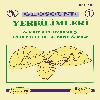Trabzon civarında yer alan bazı toprakların iyot konsantrasyonları
Bu çalışmada Doğu Pontid Kuzey Zonu'nda yüzeylenen birimlerin oluşturduğu topraklarda iyot konsantrasyonu araştırılmıştır. Ayrıca iyot konsantrasyonunun toprak-ana kaya, topografya, yükselti ve insan sağlığına etkileri irdelenmiştir. Çalışılan toprak örnekleri Pontid Alt Bazik Karmaşığı (Jura-Alt Kretase), Berdiga Kireçtaşları (Jura-Alt Kretase), Dağbaşı Granitoyidi (Üst Kretase), Cevherli ve cevhersiz dasitler (Üst Kretase), Volkano-Tortul Seri (Üst Kretase) ve alkalen bazaltlar (Neojen) üzerinde gelişen toprak profilindeki A ve B horizonlarından alınmıştır. Spektrofotometrede yapılan analizler sonucunda elde edilen ortalama iyot değerleri aşağıdaki Tabloda verilmiştir. Aynı birim içinde yükselti arttıkça iyot konsantrasyonunda azalma gözlenmekte ve bu oran % 5'e kadar ulaşmaktadır. Bölgede bir negatif I anomalisinin olduğu saptanmıştır. Bunun sebebi sert topografya, Ph koşulları ve bölgenin aşırı yağış alması nedeniyle iyodun havadan toprağa bağlanamamasıdır. Topraktaki bu iyot eksikliği guvatr hastalığına neden olmaktadır ve Doğu Karadeniz Bölgesi'nde guvatr hastalığı oldukça yaygındır. Bu nedenle bu bölge endemik guvatr bölgesi olarak önerilmiştir.
The concentration of iodine levels in soils of the Trabzon area
In this study, iodine concentrations of soils, that are developed on rocks of the North Zone of Eastern Pontide, are investigated. Effects of soil-parent rock, topography, elevation and human life to the iodine concentration are also studied.Studied soil samples, which are from the Pontide Lower Basic Complex (Jurassic-Lower Cretaceous), Berdiga Limestones (Jurassic-Lower Cretaceous), Dağbaşı Granitoid (Upper Cretaceous), Ore bearing dacites and barren dacites (Upper Cretaceous), Volcano-sedimentary Series (Upper Cretaceous), and alkaline basalts (Neogene), were collected from the A and B horizonzs of the soil profile. Average iodine values that obtained from spectrometry analyses, are given in the following Table. Average iodine contents of similar rock groups on Earth are also given in the Tablo. Iodine concentrations increase with increasing elevation in some rock units, and this ratio increases up to 30 per cent. In general, a negative iodine anomaly is obtained in the studied area. Rough topography, Ph conditions and high precipitation make it difficult to bind iodine in soils. Iodine deficiency in soils causes goiter which is commonly seen in the Eastern Black Sea Region. Therefore, the studied area is [roposed as an endemic goiter region.
___
- ISSN: 1019-1003
- Yayın Aralığı: Yılda 2 Sayı
- Başlangıç: 1986
- Yayıncı: Çukurova Üniversitesi Jeoloji Mühendisliği Bölümü
Sayıdaki Diğer Makaleler
Akarca kireçtaşının (Dazkırı-Afyon) mermer olabilirliğinin araştırılması
Servet KABASARI, Mustafa KUŞCU
Topuk-Göynükbelen sokulumunun mineralojik ve jeokimyasal özellikleri, Bursa-Orhaneli, KB Anadolu
Tuzhisar (Sivas) kayatuzu kristallerinde sıvı kapanım incelemeleri
Fuat CEYHAN, Osman KOPTAGEL, Ahmet EFE
Terkedilmiş maden ocaklarındaki (Pb-Zn yatakları) ağır metallerin çevreye etkisi
Adana-Güvenç formasyonundaki sedimanların mineralojik ve kimyasal bileşimi
Meltem SAYARSLAN, Selim KAPUR, Fevzi ÖNER
Trabzon civarında yer alan bazı toprakların iyot konsantrasyonları
